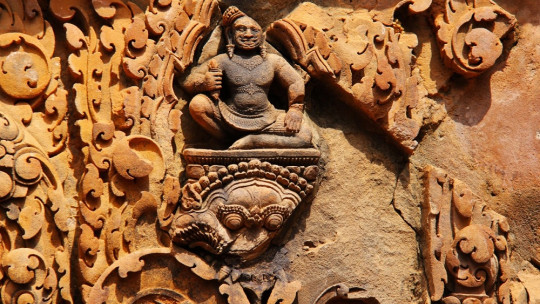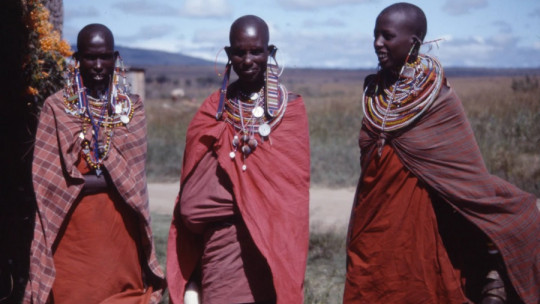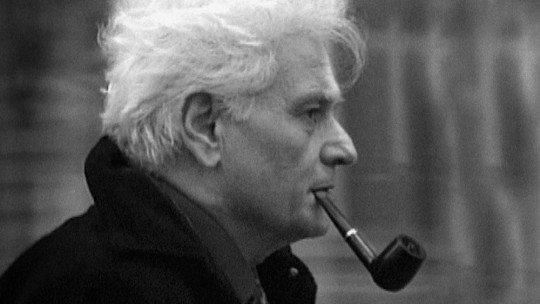Structuralist anthropology is one of the main anthropological currents which maintains that social phenomena can be approached as systems of signs or symbols.
One of his greatest references was the French anthropologist Claude Lévi-Strauss, who considered that in all human cultures there are deep and immutable structures, evidenced by the fact that in most there are terms that refer to opposite concepts.
Below we are going to try to see a little about this school of thought, some of its references and major influences, as well as what is believed about kinship and the prohibition of incest as universal rules.
What is structuralist anthropology?
In its most general idea, structuralist anthropology is a theoretical current of anthropology that maintains that social phenomena can be approached as systems of signs or symbols , which is why the anthropologist must be careful not to treat them solely or primarily as events, but also as meanings. Some of the leaders of this current are Claude Lévi-Strauss, Rodney Needham and Edmund Leach.
It is not possible to talk about structuralist anthropology without mentioning the work of Claude Lévi-Strauss, who is considered the founder of this school or, at least, it is recognized that this current draws heavily on the philosophy of this French anthropologist. He considered that deep and immutable structures exist in all human cultures which means that in all of them you can find pairs of opposite concepts that are homologous in all cultures, such as the idea of good and evil or high and low.
Influences and references
Within the structuralist anthropology led by Lévi-Strauss, there are several great references that have served as an influence for this school of thought. Among them are structuralist linguists, including Ferdinand de Saussure, Roman Jakobson, Émile Durkheim and Marcel Mauss (Prague School). Saussure argued that linguists need to go beyond simply recording parole, that is, individual speech acts and begin to understand the “langue”, which would refer to the grammar of each language, ideas and concepts that words do not transmit separately.
Lévi-Strauss highlighted this distinction in his search for the mental structures underlying all acts of human behavior. He considered that in the same way that when we speak we are not constantly aware of the grammatical rules even though we are applying them, it also makes sense that human beings are not aware of the work that social structures do in our daily lives. These structures would be the “deep grammar” of society and are unconscious.
According to Lévi-Strauss, within the social category there are other very specific phenomena that require being approached in a particular way, something that Durkheim’s sociology had introduced and that would later be developed with ethnology. Durkheim considered that social phenomena in “primitive” societies were “privileged cases,” in the sense that they were easier cases to analyze In these cultures the relationships between facts are more apparent than in those more developed societies, apparently more symbolic.
On the other hand, Marcel Mauss, disciple and nephew of Émile Durkheim, considered that social facts exist in themselves. However, these events had certain specificities depending on the area in which they were found and that only some of them are capable of mobilizing various dimensions of the life of a society, that is, they are important enough for a change in They represent some type of alteration in society as a whole. Mauss called these acts “total social acts.” and he believed that they were the most promising object of study in sociology.
What is a structure?
Lévi-Strauss explicitly speaks of “structure” as a theoretical pattern that reconstructs or couples constant elements but that, in turn, gives rise to changes, alterations, differences and similarities in different cultures.
These structures were aspects such as the brain structure, the behavior of the human “spirit”, the different languages, kinship ties…
To understand it, one could say that structures are those specifically human aspects that are present in all cultures although they vary in appearance and that They explain how the cultural diversity of the planet behaves and shapes All cultures have languages, all have a system of kinship ties, all have a religiosity, but not all share the same language, way of viewing kinship and believe in the same gods.
Lévi-Strauss considered that these elements had a universal scope and that they would have existed throughout the history of humanity, including the ability of human beings to perceive and describe reality in a dichotomous way in multiple issues, an aspect that we will see more below. background below.
About binary systems
It is considered that Lévi-Strauss’ structural anthropological point of view emerged as a result of having delved into the dialectics of Karl Marx and Friedrich Hegel. Hegel considered that each situation can present two opposite things or concepts, an idea that would be taken up by Lévi-Strauss who maintained that Cultures are also governed by a conceptual structure with opposite categories
These opposing ideas can be found in all societies and are perceived as antagonistic concepts that either fight among themselves or complement each other, but whose meaning cannot be understood without the existence of their rival concept. Some examples of this would be: high and low, good and evil, man and woman, ethics and emics, intellect and emotion, quality and quantity… Through this type of ideas, especially the concepts referring to ethics and religion, they would have been established the codes that govern marriage, mythology and rituals in societies (e.g., doing good and not evil).
From structuralist anthropology It is argued that people think in largely opposite binary terms and that each culture can be understood based on these contrary terms Whether forming more ethical and social ideas, such as religion or marriage that we just discussed, or influencing the way we interpret the world, throughout history communities have created labels that are mutually exclusive, despite because they could be transformed into systems with different degrees.
This binary vision is “translatable” to other cultures and languages. In all languages in the world it is expected that they will have words for “high” and “low”, since they are two very obvious antagonistic concepts , but what is not expected is that there are more terms to designate height, even though height itself is not a dichotomous quality. That is to say, people are not either tall or short, but we can go from taller to shorter and we could even create a system of seven categories to designate height: very tall, tall, medium-tall, medium, medium -low, low, very low.
However, our mind prefers to think in dichotomous terms and for this reason we do not have in any language, for example, seven different words to designate seven different degrees of height. We directly use the words “medium” and “very” as in this case to be more specific. This applies to the rest of the binary terms set out above. It is clear that life is not black and white, but to facilitate our perception and interpretation of the world, cultures choose to use dichotomous terms and, if necessary, clarify later.
Relationship atom according to structural anthropology
From structural anthropology, we speak of the “kinship atom” as the basic unit of society that revolves around marriage This atom would be composed of a man and a woman united by marriage, their most direct offspring and the wife’s brother. The presence of these four elements implies the formation of different types of ties: Children are linked to their parents by filiation, husbands by the marital bond, and between the husband and his wife’s brother by a relationship of alliance.
In all cultures, a value and rules to follow are established for each of these elements with respect to the kinship atom, including the prohibition of incest as a method of pressure for men from two different groups to “exchange” women. of those same groups, extending the social network and preventing the appearance of congenital problems
In the vast majority of cultures, incest is frowned upon , especially between siblings. This question has been investigated by anthropological structuralism, based on the fact that marriage is the basis of societies and that it is the means that allows links to be established between different groups through the union of its members. The anthropological analysis carried out on this issue has been called alliance theory.
While for structural functionalists the importance of kinship was found in the offspring of a marriage and the rules that define inheritance in each society, for structuralist anthropologists the essence of marriage is the marital alliance itself. That a man and a woman get married does not only imply a marital bond between the two of them, but also the creation of ties between their families which leads to a strategic alliance between two different groups of people.
This alliance would not be possible if the union was made by brothers or cousins, this being the main reason why societies would classify marriages between relatives as a crime and/or immoral act, in addition to being a strategically useless union. Marriage would have the function of creating, fostering and solidifying relationships between groups of people that are part of a society, making the social fabric stronger.
Marriage between siblings and cousins is not positive or beneficial for society as a whole. If families only married their children and nephews among themselves, these families would become lineages isolated from each other that would hardly support others in economic, social or legal matters. Since there was no connection with groups of strangers, each group would have to fend for itself, causing the population to become nothing more than a set of groups that go on their own over time and, therefore, society would be very fragmented and lacked social cohesion.









